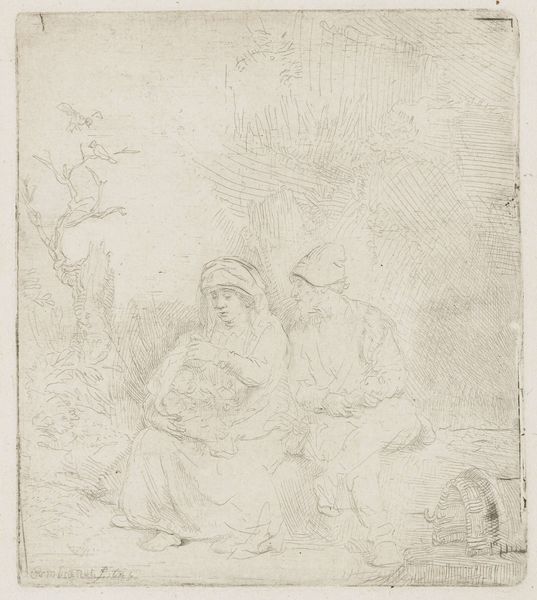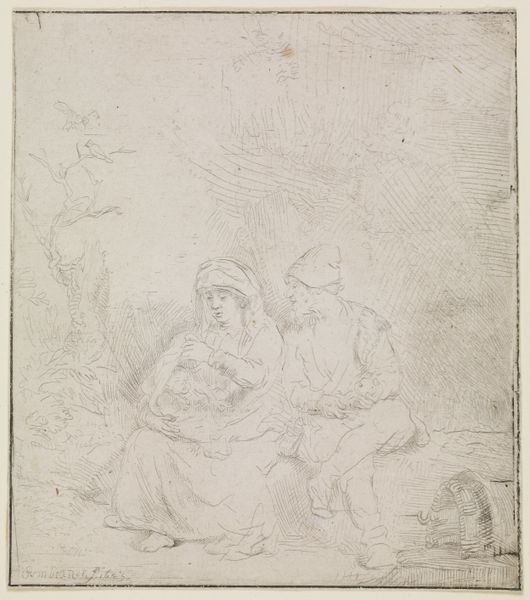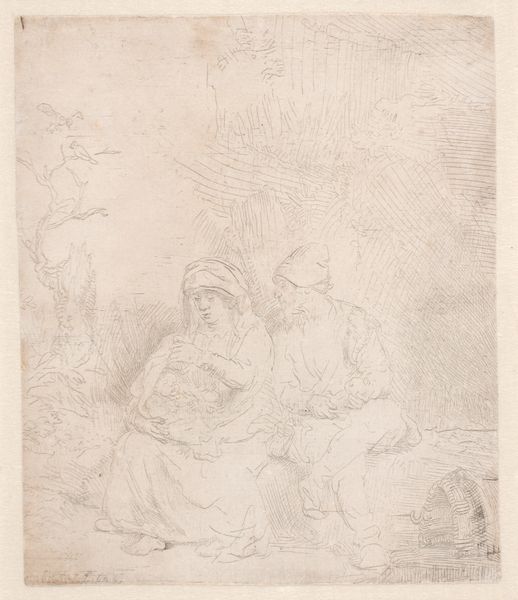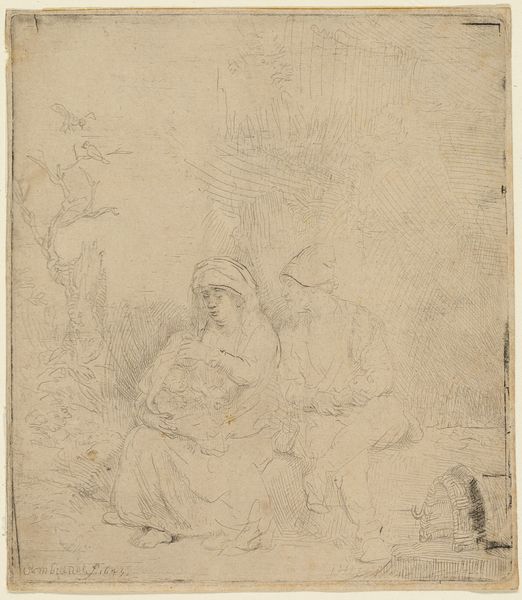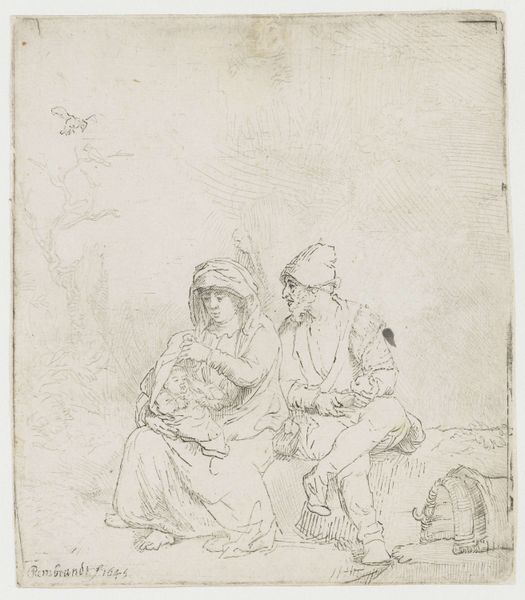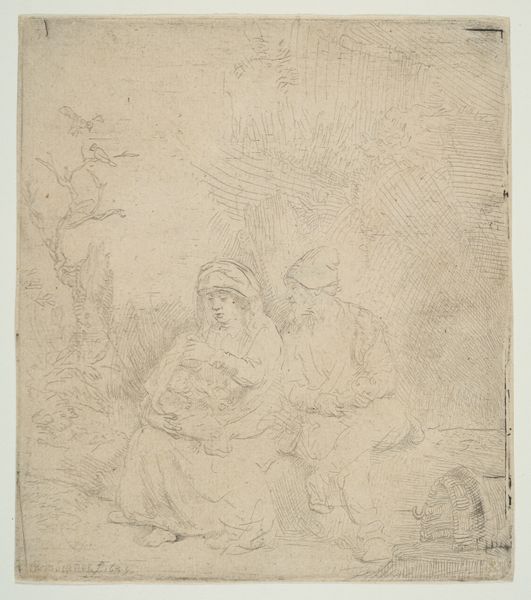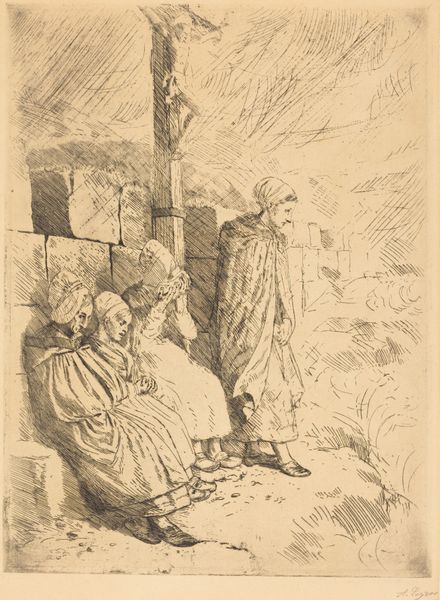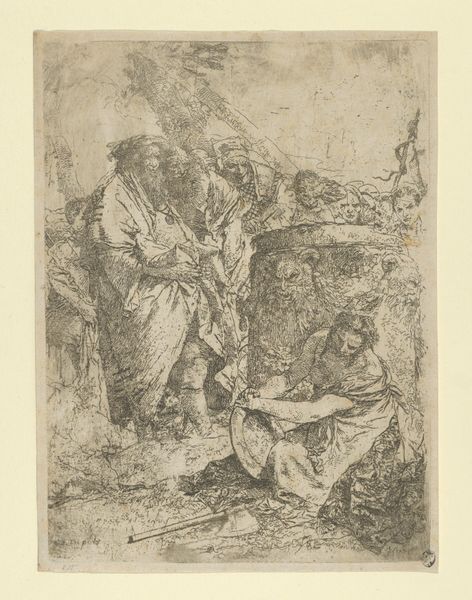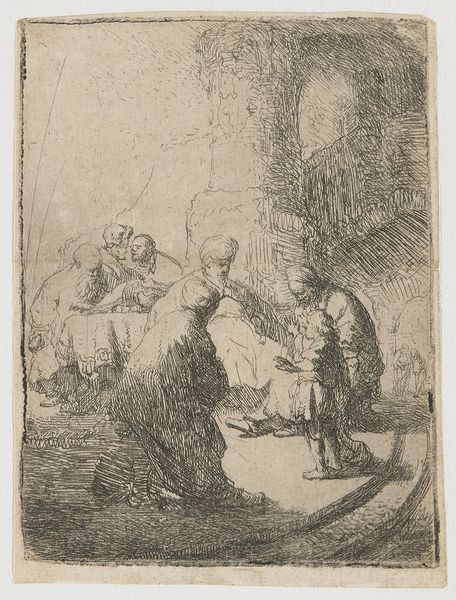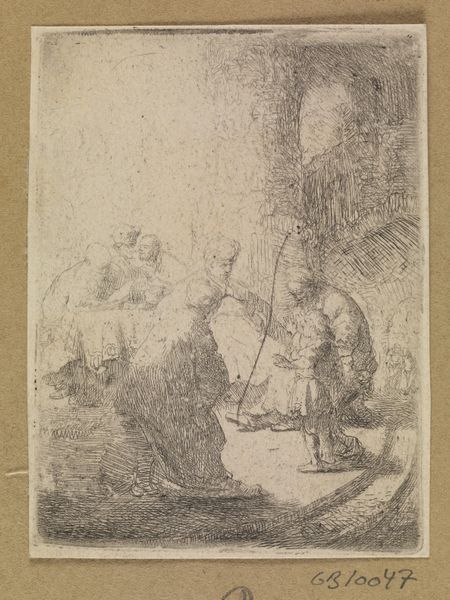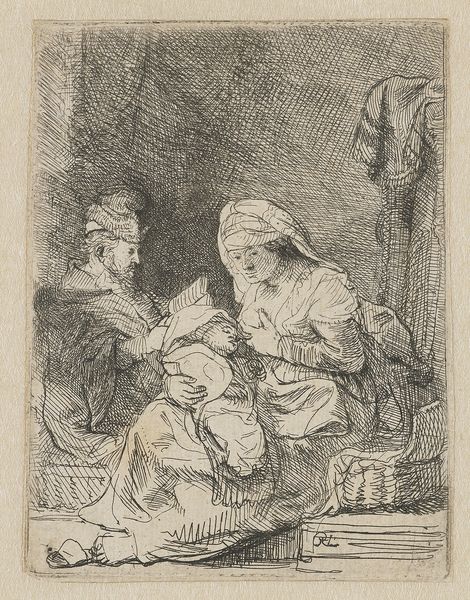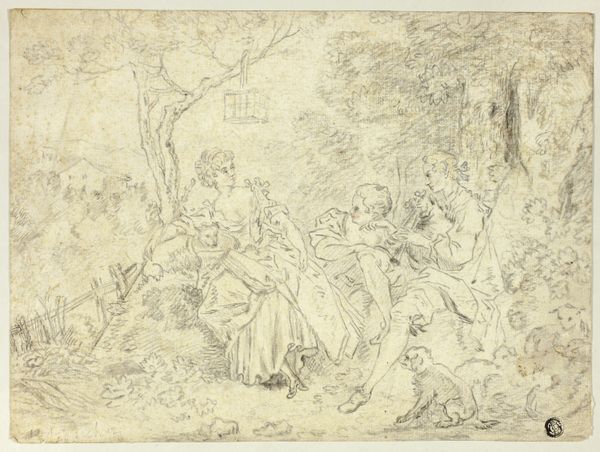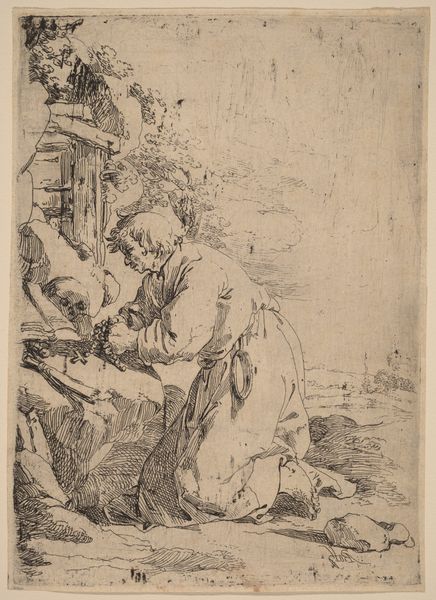
drawing, print, etching, paper
#
portrait
#
pencil drawn
#
drawing
#
baroque
# print
#
etching
#
figuration
#
paper
#
line
Dimensions: 13 x 11 cm
Copyright: Public domain
Curator: Let's spend a few minutes examining "A Repose In Outline," an etching by Rembrandt van Rijn, completed around 1645. Editor: My initial reaction is a sense of fragility. The lines are so delicate, almost tentative. It feels like peering into a fleeting moment. Curator: Rembrandt often used etching to explore the intimacies of daily life and this particular piece presents a tender scene of a family resting, possibly during a flight to Egypt. The light touch highlights the everyday in biblical narrative. Editor: Absolutely. The portrayal of the mother cradling the child, while seemingly serene, carries this palpable weight. It raises a critical point about visibility and labour, framing the narratives of displacement with the domestic. It challenges us to contemplate the narratives that get archived and who decides what merits recording. Curator: You're right to focus on the act of witnessing. What I find remarkable is Rembrandt’s decision to use such a light touch for what is actually a dramatic subject. The almost ethereal quality seems to emphasize the vulnerability and universality of the refugee experience. The figures are ordinary, and their pose relaxed and almost passive. Editor: Exactly. It speaks to the broader cultural construction of family, duty, and belonging, or lack thereof. And I love that there is a subtle indication of an escape; we should remember that the familiar Biblical scenes come from a reality that should spark hard questions today regarding contemporary displacement issues. Curator: Indeed. There's a real tension between the comfort and potential hardship depicted. Looking closer, one notices Rembrandt's exceptional ability to capture not just the physical form, but an entire psychological state, all through economical and nuanced lines. The art and politics of imagery at play here create complex engagement with the artwork and the questions it provokes in each of us. Editor: This has provided some nuanced layers that connect the themes, inviting ongoing dialogue about power and visual representation, reminding us that historical readings are continuously evolving, informed by present circumstances.
Comments
No comments
Be the first to comment and join the conversation on the ultimate creative platform.
